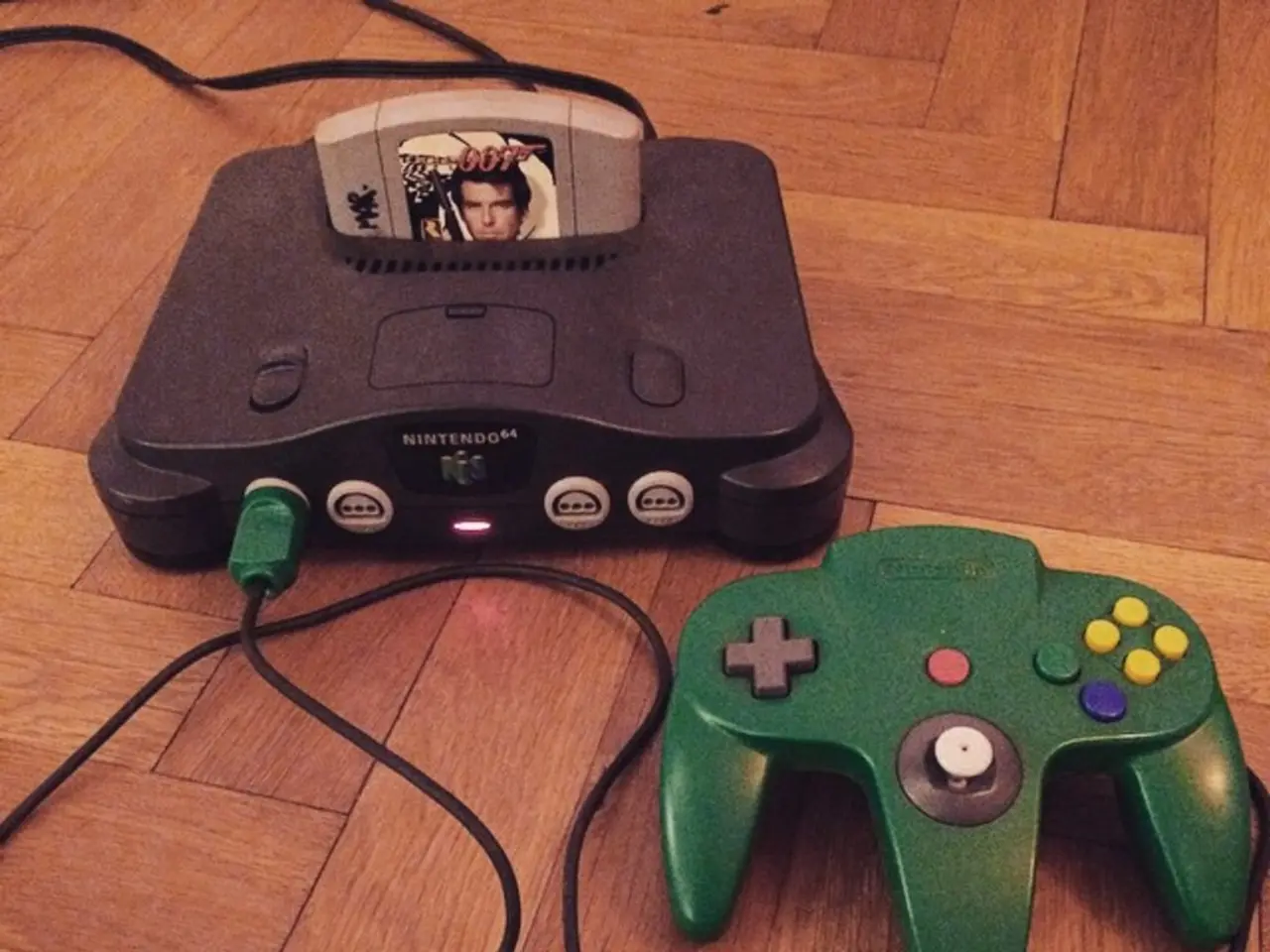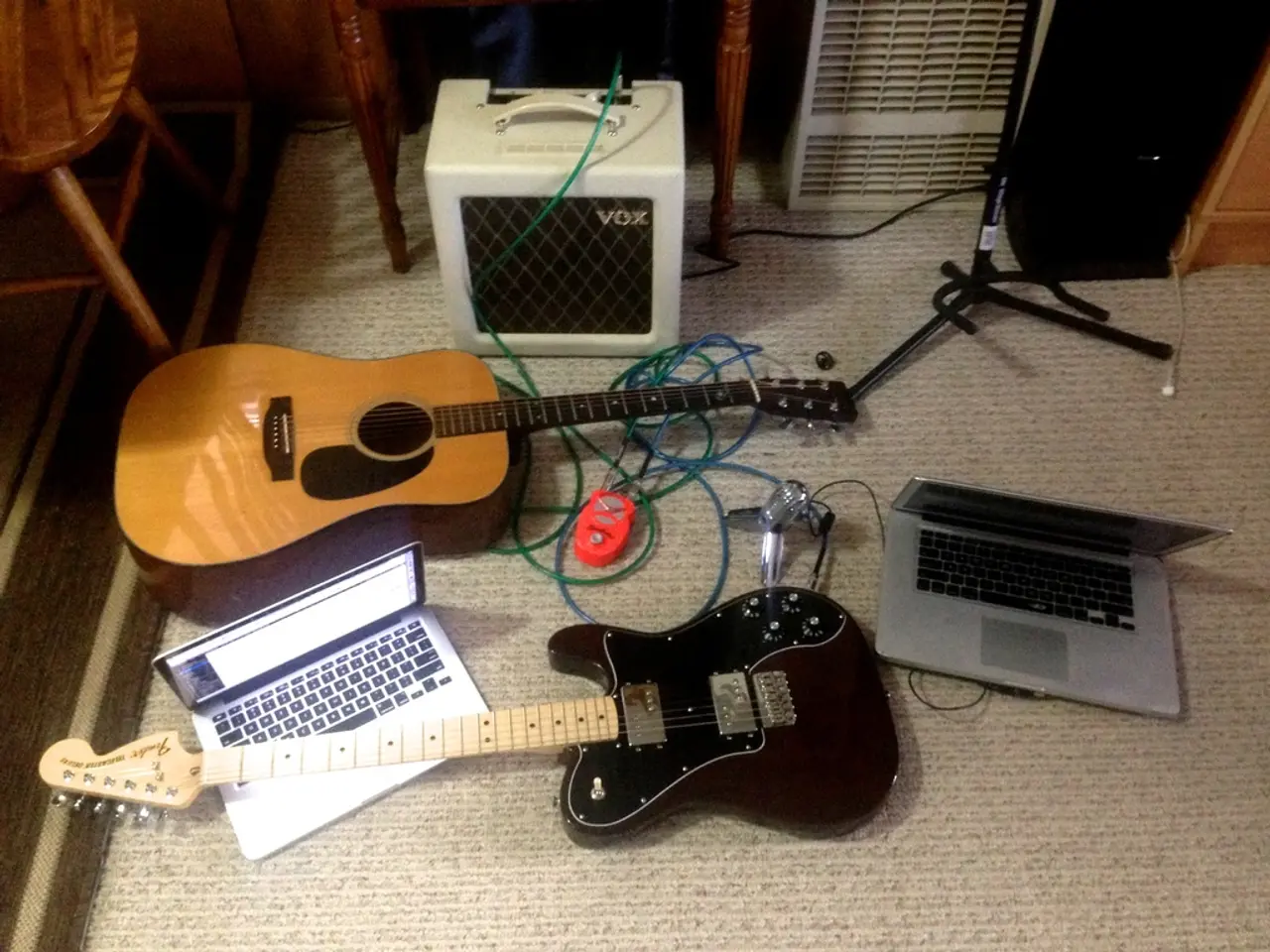Mastering Keyboard Recording Techniques: Crucial Stages for Professional Sound in Studios
Setting Up a Home Studio for Recording Keyboards: A Comprehensive Guide
If you're looking to create high-quality keyboard recordings from the comfort of your home, here's a step-by-step guide to help you set up an efficient and productive studio.
1. Selecting Your Keyboard or Digital Piano
Start by choosing the right instrument for your needs, whether it's a MIDI keyboard controller or a digital piano. MIDI keyboards can be connected directly to your computer via USB for digital sound generation and recording, while digital pianos often provide audio line outputs for direct analog capture or a USB-MIDI interface for digital data transfer.
2. The Audio Interface
An audio interface is essential for converting the keyboard's analog signals into digital audio that your computer can process. Connect keyboards with line outputs to the interface's line inputs, while MIDI controllers can be connected via USB or MIDI cables to control software instruments on your computer.
3. Digital Audio Workstation (DAW)
Install a DAW on your computer to record, edit, and mix your keyboard performances. Popular DAWs like Ableton Live, Logic Pro, or FL Studio support MIDI and audio recording. Setting up keyboard shortcuts and streamlining your workflow can increase productivity.
4. Monitoring Setup
Use quality studio monitor headphones or speakers for accurate sound playback while recording and mixing. Closed-back headphones help avoid bleed into microphones when capturing acoustic instruments or ambient sounds.
5. Microphones (Optional)
If you want to record the natural sound of your digital piano's speakers or an acoustic keyboard with amplified sound, a USB condenser microphone with a cardioid pattern is good for capturing clear sound with minimal background noise. Use shock mounts and pop filters for best results.
6. Cables and Cable Management
Keep essential cables like USB, USB-C, stereo audio cables, and adapters organized and accessible to reduce setup friction, encouraging fluent creativity and fast recording sessions.
7. Room and Acoustics
Though home studios may lack separate isolation booths, try to record in a quiet environment with minimal echo. Use acoustic panels or DIY foam treatments to reduce reflections and external noise for cleaner recordings.
8. Additional Gear
Consider adding MIDI controllers with knobs and faders for hands-on control, external synths, or hardware effects units for diverse sound design.
Tips for Optimal Recording
- Record keyboards at levels that use most of the DAW's headroom without clipping the signal.
- Choosing between passive and active direct boxes depends on the keyboard's output levels and sonic characteristics.
- Layering multiple keyboard sounds creates a rich, full sonic palette.
- Using a keyboard controller allows easy switching between various tones.
- Direct boxes convert unbalanced high-impedance signals to balanced low-impedance signals, reducing noise and hum.
- Proper level management prevents distortion and ensures a clean, professional sound. Keep level meters' peaks around -6 to -10 dB.
- Exporting your music in the desired format is essential. WAV is a high-quality storage format, while MP3 is suitable for digital distribution.
Recording on the Go
To record audio from a keyboard using a phone, connect a suitable adapter from the keyboard's output to the phone's microphone input jack. Applications like GarageBand for iOS or BandLab for Android are effective for recording and offer basic mixing features right from the phone.
Creating a Rich Soundscape
In addition to keyboards, consider incorporating acoustic guitars, percussion instruments, electric guitars, and drums to add a variety of sounds and textures to your music. Layering different drum sounds adds complexity and depth, while adding temporal effects like delay and reverb transforms keyboard sound.
Final Polishing
Mastering focuses on the final polish, with subtle effects like reverb. Small room reverb adds intimacy, while larger hall reverb gives a sense of vastness. Tempo-synced delay creates rhythmic echo patterns. Equalization techniques enhance different frequencies during mixing.
In summary, a basic home recording setup for keyboards and digital pianos includes the instrument, a reliable audio interface, a DAW on your computer, quality headphones or monitors, optionally a condenser microphone if capturing amplifier sound, and organized cables in a quiet, acoustically treated space. Enhancing your workflow with shortcut devices and maintaining a minimal yet functional setup also helps maximize productivity and creativity. If you need recommendations on specific gear or software for your home keyboard studio, feel free to ask!
[1] Studio One [2] Auralex Acoustic Panels [3] Focusrite Scarlett Audio Interface [4] Yamaha P-125 Digital Piano [5] Elgato Stream Deck
- For producing high-quality recordings, select the appropriate keyboard or digital piano suited to your needs, such as MIDI keyboards or digital pianists with audio line outputs or USB-MIDI interfaces.
- An audio interface is vital for converting the keyboard's analog signals into digital audio that your computer can process, connect keyboards with line outputs to the interface's line inputs, or MIDI controllers via USB or MIDI cables.
- Install a Digital Audio Workstation (DAW) on your computer to record, edit, and mix your keyboard performances, popular choices are Ableton Live, Logic Pro, or FL Studio.
- Use quality studio monitor headphones or speakers for accurate sound playback during recording and mixing to increase productivity.
- If desiring to record the natural sound of your digital piano's speakers or an acoustic keyboard with amplified sound, use a USB condenser microphone with a cardioid pattern for clear sound with minimal background noise.
- Keep essential cables like USB, USB-C, stereo audio cables, and adapters organized and accessible to minimize setup friction.
- Record keyboards in a quiet environment with minimal echo, or use acoustic panels or DIY foam treatments to reduce reflections and external noise for cleaner recordings.
- Add MIDI controllers with knobs and faders, external synths, or hardware effects units to enhance sound design possibilities in your home studio.9.Incorporate additional instruments such as acoustic guitars, electric guitars, percussion, and drums to create a rich musical texture, while layering various drum sounds adds complexity and depth, and using temporal effects like delay and reverb transforms keyboard sounds, enhancing the overall soundscape.



